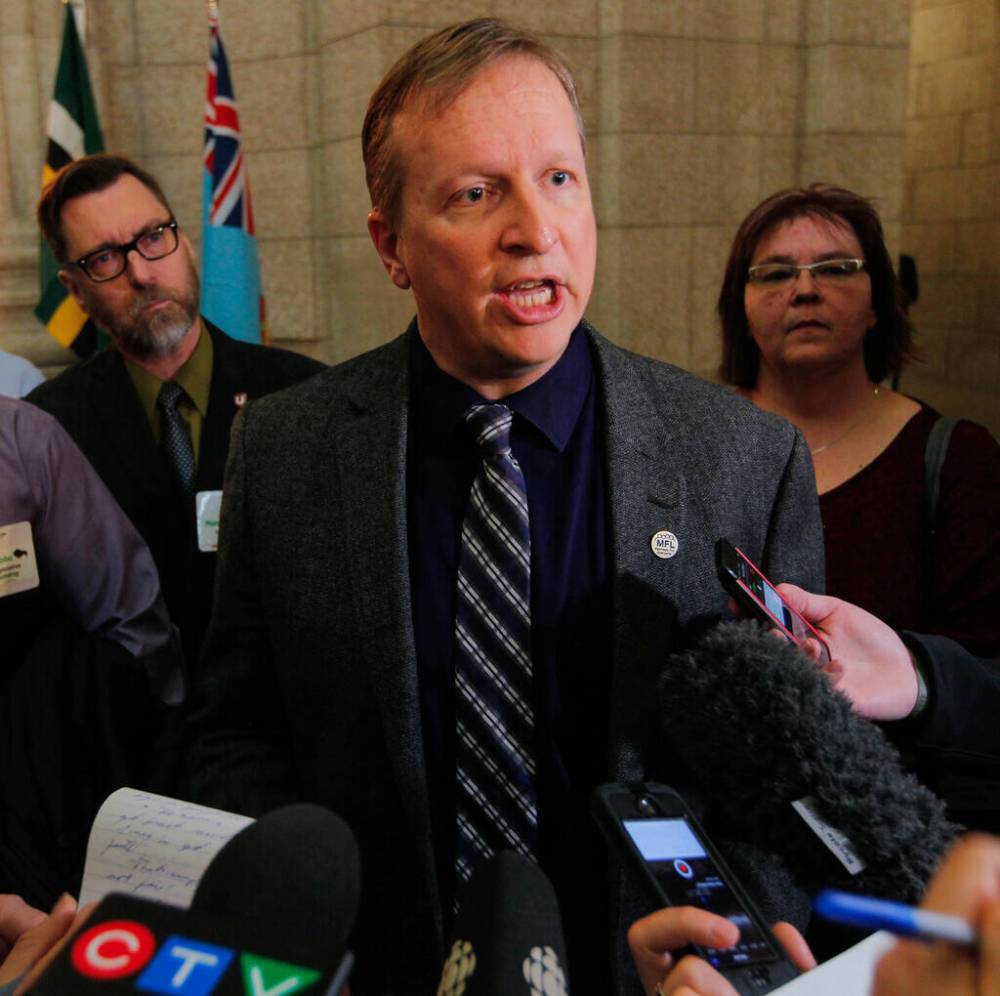A chance to address wage ‘embarrassment’
Read this article for free:
or
Already have an account? Log in here »
To continue reading, please subscribe:
Monthly Digital Subscription
$0 for the first 4 weeks*
- Enjoy unlimited reading on winnipegfreepress.com
- Read the E-Edition, our digital replica newspaper
- Access News Break, our award-winning app
- Play interactive puzzles
*No charge for 4 weeks then price increases to the regular rate of $19.00 plus GST every four weeks. Offer available to new and qualified returning subscribers only. Cancel any time.
Monthly Digital Subscription
$4.75/week*
- Enjoy unlimited reading on winnipegfreepress.com
- Read the E-Edition, our digital replica newspaper
- Access News Break, our award-winning app
- Play interactive puzzles
*Billed as $19 plus GST every four weeks. Cancel any time.
To continue reading, please subscribe:
Add Free Press access to your Brandon Sun subscription for only an additional
$1 for the first 4 weeks*
*Your next subscription payment will increase by $1.00 and you will be charged $16.99 plus GST for four weeks. After four weeks, your payment will increase to $23.99 plus GST every four weeks.
Read unlimited articles for free today:
or
Already have an account? Log in here »
Hey there, time traveller!
This article was published 07/12/2021 (1463 days ago), so information in it may no longer be current.
“Downright embarrassing” is how New Brunswick’s minister of labour, Trevor Holder, described that province’s dubious distinction of having the lowest minimum wage in Canada. His acknowledgment of this perceived economic ignominy was accompanied by an announcement the wage — currently pegged at $11.75 per hour — will be increased by $2 next year.
Meanwhile, on the Prairies, “pretty damn embarrassing” is how the Manitoba Federation of Labour characterizes the minimum-situation here, as New Brunswick’s two-stage 2022 increase will relegate this province to second-lowest on the national minimum-wage table.
“When people work full time and still live in poverty — and that is the reality for thousands of workers and Manitobans — that needs to change,” said MFL president Kevin Rebeck.

Manitoba’s minimum wage, which by legislation passed by the Pallister government is indexed to inflation, was increased by five cents on Oct. 1 and currently sits at $11.95; only Saskatchewan, at $11.81, has a lower rate.
According to recent calculations by the local arm of the Canadian Centre for Policy Alternatives, the so-called “living wage” for a two-parent/two-child family in Manitoba — an amount described as the hourly rate at which a household can meet its basic needs once government transfers have been factored into the equation — sits at $16.15, an increase of $1.61, or 11 per cent, since 2016.
The challenges faced by minimum-wage earners have been compounded by the recently surging inflation rate, which hit 4.7 per cent in October after experiencing its steepest increase since March 2003. Energy prices, which have risen a full 25 per cent, food and shelter costs — up nearly five per cent — and assorted increases related to supply-chain issues have been major contributing factors to low wager earners’ heightened economic stress.
Manitoba’s child poverty rate of 28.4 per cent is the highest among Canadian provinces and second only to Nunavut when territories are factored in.
Whether or not the current situation is an embarrassment is open to discussion from numerous vantage points; what is clear, however, is that those living with less in Manitoba are feeling the pinch more now than in recent memory. Manitoba’s child poverty rate of 28.4 per cent is the highest among Canadian provinces and second only to Nunavut when territories are factored in.
Business groups such as the Canadian Federation of Independent Business argue the early stage of economic recovery from pandemic impacts is not the time to saddle small businesses with additional wage-related costs. CFIB figures indicate only one-third of small businesses have returned to pre-pandemic revenue levels, while more than 30 per cent continue to lose money every day they operate.
To that end, the MFL suggests specifically targeted government supports could help small operators absorb the cost of a minimum-wage hike.
Perhaps it’s time to commit to a path and timetable for minimum-wage increases that are not governed by inflation-rate incrementalism but rather with an eye to making the notion of a true living wage a foreseeable reality for lower-income Manitobans.
The province has not weighed in on the current discussion regarding Manitoba’s lagging minimum-wage rate, beyond a released statement that “As we continue to address the ongoing economic and public health challenges posed by COVID-19, our government remains committed to making life more affordable for all Manitobans.”
The question remains: how? Perhaps it’s time to commit to a path and timetable for minimum-wage increases that are not governed by inflation-rate incrementalism but rather with an eye to making the notion of a true living wage a foreseeable reality for lower-income Manitobans.
Newly elected Premier Heather Stefanson has expended considerable energy assuring Manitobans her leadership on issues of importance will be considerably more open to dialogue and collaboration than that of her predecessor. Perhaps the minimum-wage file is one upon which she could endeavour to imprint the much-heralded “new boss” stamp.







